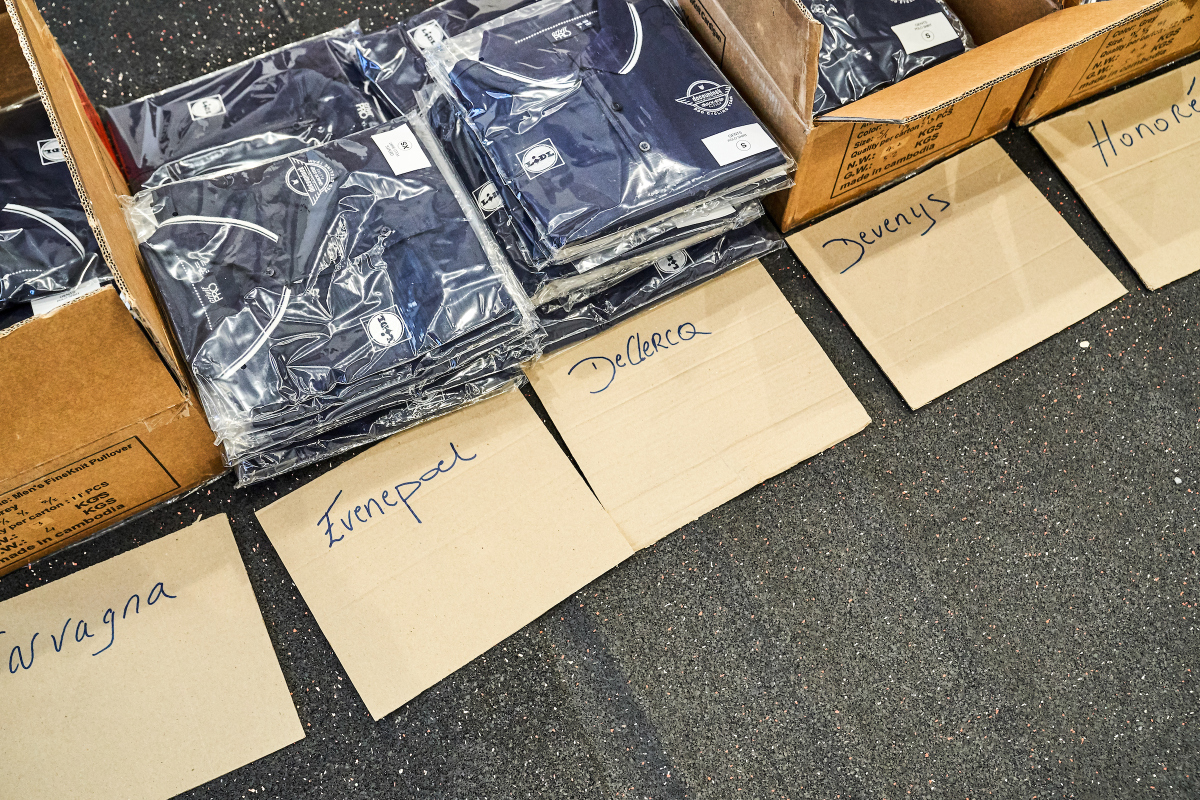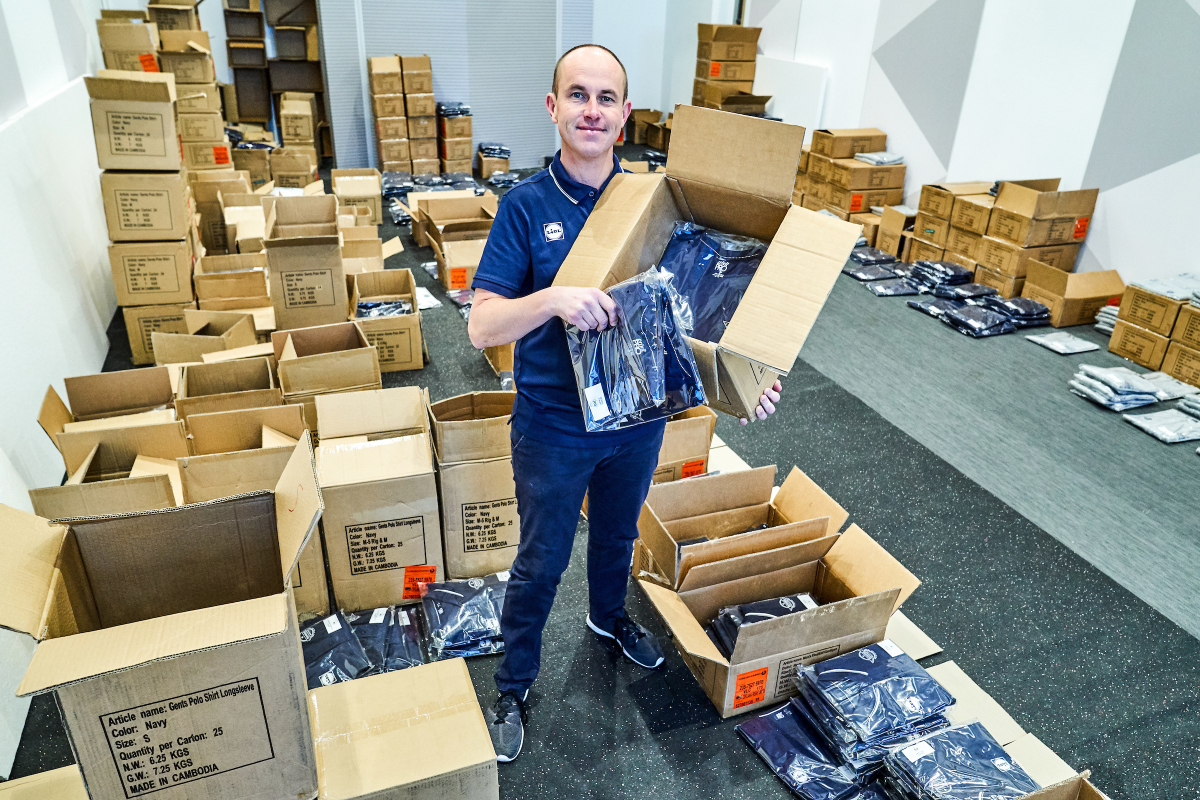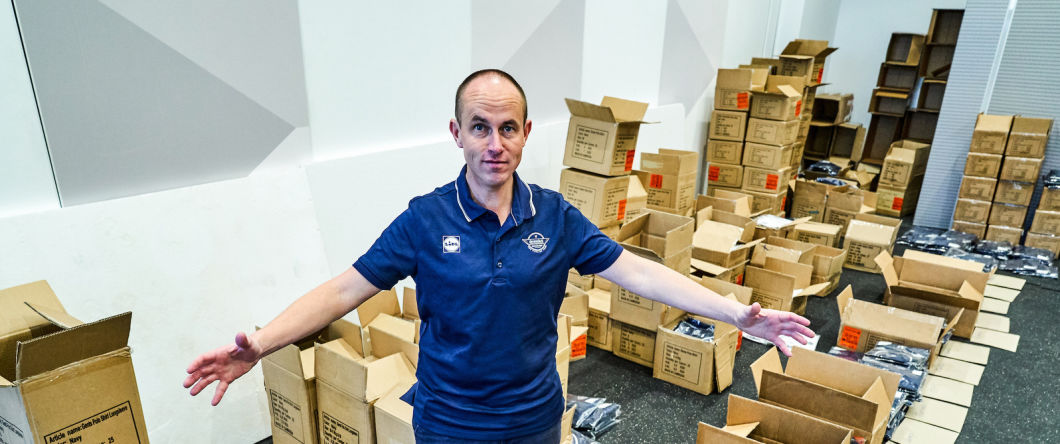Want to know more about what it means to work behind the scenes at Deceuninck – Quick-Step, as part of this huge and happy family? Then read Fre’s in-depth blog and discover how a World Tour team works.
The process of making a new kit is one that already starts during the current season. Once the sponsors have been confirmed, we start designing the kit for next year somewhere in August-September. But once this kit has been designed, then all the detailed work begins, because every kit is custom-made in order to meet each rider’s needs.
In October we have Vermarc, who makes our riders’ kit, attend the first official team meeting we schedule every time ahead of the next season. That means all new riders and staff are present and the whole team as well and Vermarc takes all the measurements of the riders. Some want their bib shorts a little bit shorter or longer than others, nobody has the same jersey plus all the jerseys have the name of the rider on it, which leaves no space for us to switch the jerseys sometimes, when necessary.
Believe me, everything is adjusted to the rider personally, so that is quite a scrupulous job. We have 25 riders on the squad and quite a lot of different jerseys: the four National Champions, then for instance, for Philippe Gilbert, who was World Champion a couple of years ago, the stripes are on the sleeves of his jersey and neck, because all the former champions keep the champion stripes on their jersey.
Also, it’s very important to mention that not all riders have the same amount of clothes, it varies from rider to rider, especially now since the sprint suits have been introduced. For instance, Julian Alaphilippe always wears a jersey and bib shorts, almost never a sprint suit. But other riders, for instance Davide Martinelli, races only with sprint suits. After talks with the rider and Vermarc, the latter decide how many clothes the rider should get for the season. Then, once all the measurements have been made, they can start manufacturing the clothes.

In December the first package of new clothes arrives at our hotel in Calpe, because we need them already for the photoshoots which take place during that week, but otherwise the boys can’t ride with the new jersey until January 1st. Then the second batch is delivered in January to our headquarters in Belgium.
Besides the race clothing we also have our casual clothing provided by Crivit Pro. Our marketing team decides the design together with Crivit Pro and then they come to me to see what we want and how many casual clothes we need for the team; to these, they add an extra amount that we put on sale on our webshop for the fans.
The marketing team already starts thinking of the first designs for the next season in the month of July, because having everything ready takes quite some weeks and it’s important to kick off things early in order to get it on time in December, also for the photoshoots. Crivit Pro also comes to our first team meeting in October to take the measurements of everyone, both riders and staff, personally. Then to make my life a little bit easier, they make personal packages, containing the clothes, with the name of each member of the Wolfpack.
This means that when we arrive to Calpe and the clothing awaits us, I just have to unload the packages and put them alphabetically. It’s important for us that everything is delivered on our first training camp in December, not only for the photoshoots but also because this is the only training camp where we have the whole team together – staff and riders – so when they leave after two weeks they have all their new clothing packed in a new suitcase, which is also provided by Crivit Pro.
How long does this whole process take? Well, it actually never stops… I’m always busy with the clothing and the only time that it becomes a little bit easier is around March, when all the races really have been rolling and everybody is on the go.

More than a job, a passion
I have been working for the team for 12 years now. In my first years I was doing solely soigneur’s work. But when the famous Dirk Nachtergaele retired from cycling, I took over this part of the job. From the moment we get next season’s calendar, consisting of the races where we will go, I start making the program for all our soigneurs and also our bus drivers. I do this, of course in consultation which each soigneur and bus driver, I send out an e-mail to all of them asking which races they really want to do, what they prefer to do or don’t like to do so much.
Then, together with Ricardo Scheidecker, our Technical & Development Manager, we start working on this puzzle, trying to do our best for everyone, making sure that everyone has the same amount of days and that this program is something that everyone can live with, that everyone is happy because this is also really important.
I love this part of the job, but my main job is still and always will be a soigneur, so I’m always happy when we February gets closer and everything is up and running in terms of clothes and everything, so I can focus on being a soigneur at the races. My favourite races to do are the classics, just being part of this special team during this part of the season is something really amazing. Although they are very stressful, it is something that I wouldn’t want to miss for the world.
Photo credit: ©Sigfrid Eggers
